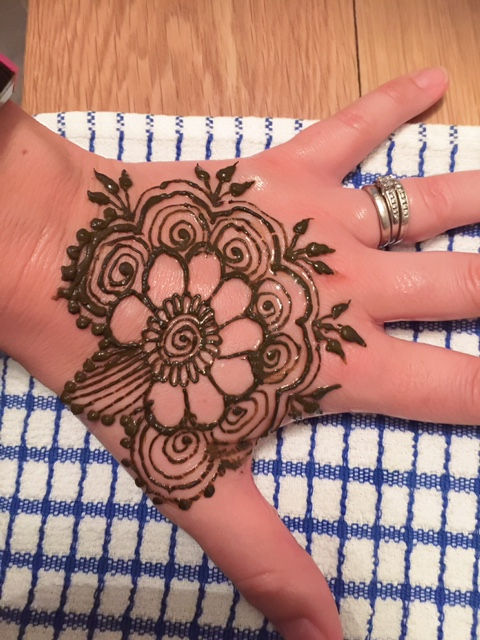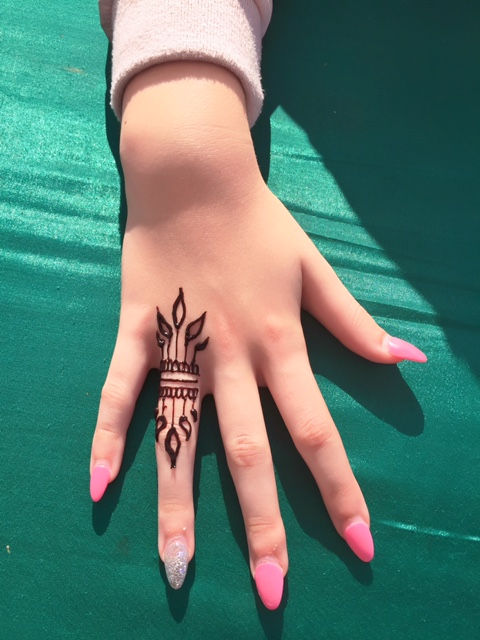
































Located in Essex, professional Henna Art (also known as Mehndi or Henna) services for individuals, groups, private parties, schools, colleges, businesses, spas, salons, corporations and any event big or small can be accommodated for.
Henna FAQ
Is henna a natural product?
Yes. Henna is a natural pigment, and in most people will cause no harm. The leaves are taken from the plant, dried, and ground into a powder. Some commercial henna products may have added ingredients; always read the labels. It is best to do a patch test to be sure that your skin is not sensitive to this plant.
Does it hurt to apply henna to the skin?
No! Whether for everyday wear or special celebrations, painting henna on the skin is a painless beauty treatment. It is a pleasant and relaxing experience. The most difficult part of getting a henna design is sitting still for the time required, which can be anywhere from few minutes to several hours depending on the complexity of the design. Henna designs are drawn free-hand with a pastry-bag-like cone, that does not pierce the skin.
How long will my henna design last?
Permanent Tattoos are not easily removed and, in some cases, may cause permanent discoloration. Henna body designs will last anywhere from few days to weeks. It fades off naturally in 2 to 3 weeks, depending on the original color of the henna, where it is placed on the skin, how long it is left on the skin, your skin type, the number of soap water washings, and any exfoliation of the area.
What do you do after henna is drawn on the skin?
After the henna design is drawn on the skin, it will take about 15–30 minutes to dry completely. The artist will then seal it with a natural product to keep the design intact so it won’t flake off. You have to leave the design on the skin for minimum 6–8 hours (more for better results) without washing or scrubbing the area. When ready to remove the paste, you will apply any oil and scrape off the design. Then apply heat to the design for few minutes to activate the henna color. Make sure you do not wash the design with soap for the next 24 hours when the color gets darker and darker.
What are the usual colors of henna?
Depending on your body chemistry and skin color, the designs can appear as orange, red, brown, burgundy, or khaki green. The color of henna is also based on the strength of the henna paste, the length of time it is left on the skin and the after care given. The best place to get the really red shades are palms of hands and soles of feet. Most other areas won't show the reds nearly as well. As a rule, the hands and feet take the dye the best and so will have the most vibrant and long-lasting color. As you move away from the extremities and closer to the body, your stains will be lighter and less vibrant. You can counteract this to some degree, especially if you are having the design applied for a special occasion, by having a second application of henna a day or two after your first.
What is Black Henna and why is it used?
Black henna is not natural henna! It often contains a chemical (PPD) that can cause serious inflammation to the skin. People use black henna because of the black tattoo like color. DO NOT USE BLACK HENNA. Always check with the artist to see if they are using Black Henna. If so, choose another artist who uses natural henna.


TESTIMONIALS
“I loved my henna tattoo! All my friends wanted to know where I had been to get such a work of art! Jity was such fun and the whole experience was fab!” Laura, 17, student
“Just Henna is a brilliant addition to any event. So unusual and Jity is so friendly. Our guests were delighted to have henna tattoos to remember our special day.” Simone, 34, bride



